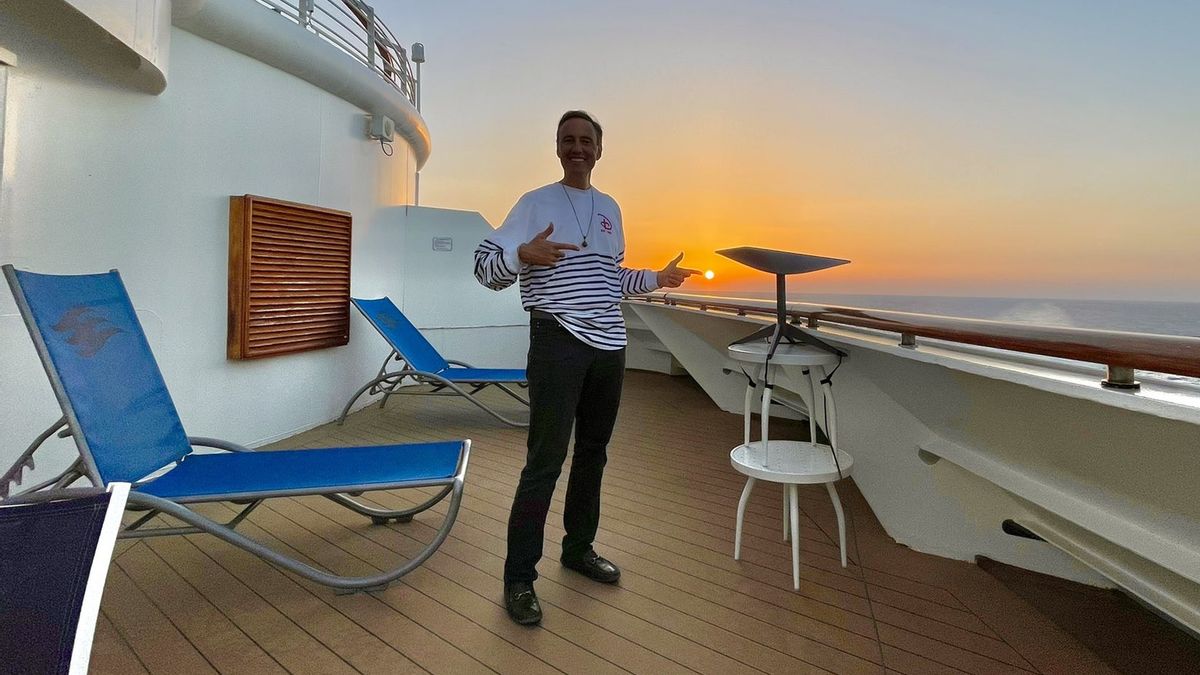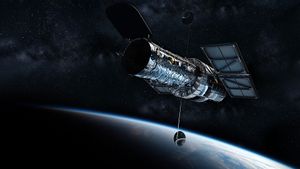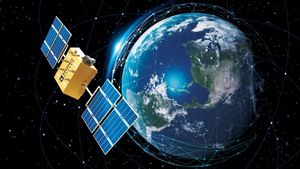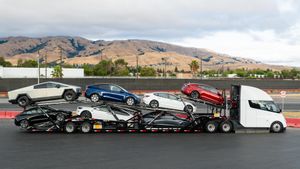
JAKARTA – Starlink, the internet satellite company from SpaceX, aims to send 42.000 satellites to low-Earth orbit in the next dozen years. So far this year alone, Elon Musk's internet company has launched around 2.200 satellites.
For the next five years, the project, which started in 2019, is expected to send 4,408 low-latency satellites into Earth orbit. If everything is launched and installed this will make all corners of the Earth, will be served by the internet from Starlink. There is no longer a blind spot on Earth.
According to a Satellitemap.space report a real time view of the Starlink satellite constellation is tricky. Even now it is seen that the Starlink satellite has almost covered the earth's surface. This can be seen from the points in outer space.
There are three kinds of satellite positions in their orbits. These are Low Earth Orbit (LEO): 500-2.000 km above the earth's surface, Medium Earth Orbit (MEO): 8.000-20.000 km above the earth's surface, and Geostationary Orbit (GSO): 35,786 km above the earth's surface. Starlink itself is included in the LEO category.
Currently, Starlink only serves the majority of consumers in North America and has approximately 500.000 subscribers. It is estimated that around 80% of Starlink's current users are in North America, another 18% in Australia, New Zealand and Europe. Only 2% of Starlink users live in the rest of the world. This includes India, where they also offer internet services to residents in remote areas.
Until now, because Starlink has also been allowed to operate in around 25 countries, including Indonesia. For Indonesia, Starlink does not serve residents or subscription retail sales. Starlink is allowed to dock in Indonesia only to serve the closed fixed network of PT Telkom Satellite Indonesia (Telkomsat).
There are no bureaucracy and rules to get permission to sell and provide internet services in various countries. Starlink's licensing process in India, for example, is currently deadlocked. If allowed, it is targeted that there will be 200.000 new Starlink users in India.
SEE ALSO:
In America, along with the expansion of 5G services by cellular operators, Starlink's market share also continues to decrease. However, there is still plenty of room for Starlink to gain users.
Even now Starlink has been offered for use on airlines, even cruise ships. In 2016, for example, there were 10.000 luxury cruise ships in the world that used the Starlink internet.
The number of private jets that are actively operating reaches 22.000. In America, Starlink is also targeting a very large number of RV (recreational vehicles) or campervans. Namely, reaching 11.2 million in 2021. In fact, there are 400 thousand-500 thousand RV cars sold every year.
But apart from bringing benefits, satellites also cause problems. For example, if a satellite carcass is useless and functioning, it will become a dangerous space junk in orbit. Given the large number of Starlink satellites, not to mention satellites belonging to other companies, in the next few decades, space will be filled with dangerous satellite waste.
The English, Chinese, Japanese, Arabic, and French versions are automatically generated by the AI. So there may still be inaccuracies in translating, please always see Indonesian as our main language. (system supported by DigitalSiber.id)

















